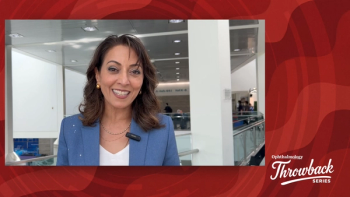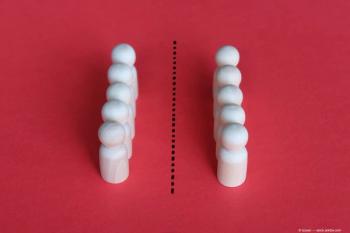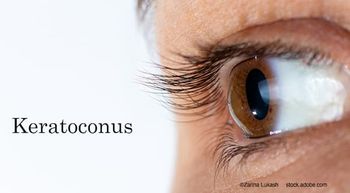
Achieving balanced vision
Here, Dr Verdoorn presents his experiences with the Raindrop Near Vision Inlay, which he has found to be a successful option for presbyopic patients.
Take-home message: Here, Dr Verdoorn presents his experiences with the Raindrop Near Vision Inlay, which he has found to be a successful option for presbyopic patients.
By Dr Cees Verdoorn
The issue of managing discerning presbyopes effectively while meeting their visual expectations is hard for many refractive surgeons. With information of presbyopic correction being more readily available than before, patients are looking to surgeons to offer new and adaptable corrections that fulfill the needs and requirements of their demanding lifestyles.
Many of my patients have busy work and personal lives and demand that their vision matches their needs. I have previously spoken about how my clinic made the move from only offering monovision LASIK correction to also include the Raindrop Near Vision Inlay.1 This has proven to be quite a success for my practice and patients. Here, I present my clinical experiences.
Near vision corneal inlay
The advent of near vision corneal inlays has marked a turn-around for refractive choices to offer ‘lifestyle-active’ presbyopes. I have been offering, and successfully implanting, the Raindrop Inlay (ReVision Optics Inc. Lake Forest, California, USA) for over two years in my refractive clinics. This is 2 mm in diameter and approximately 30 µm thick that is placed within the corneal stroma under a flap created with a femtosecond laser. It works by changing the shape of the cornea to create a profocal cornea. It produces a gradual power gradient around the centre of the pupil that allows for improved near and intermediate vision.
In a finite 3D computer model, the Inlay demonstrates its biocompatible hydrogel properties by not adversely affecting essential glucose and oxygen transport across the corneal area. This allows it to be inserted at (and removed from) different corneal depths without compromising on this essential nutrient flow.2
Presbyopia management in my clinic
I have previously discussed and still advocate that the success of monovision is heavily weighted on patient selection as well as their expectations.1 In my experience, those with near addition of less than and around +1.50 D can adapt to monovision. However, this is known to take time and many of my patients felt that there was compromise in balanced binocular vision.
A decrease in balanced vision will ultimately affect stereopsis. As presbyopia progresses with time and my patients will continue to lose accommodation and eventually they will find themselves back in reading glasses. Therefore, monovision LASIK is not a permanent solution to correct presbyopia.
By offering an additive procedure (i.e., a removable inlay like the Raindrop) my patients are able to take full advantage of improvements in intermediate, near and distance vision without sacrificing balanced vision. Furthermore, I am able to offer them a safe, permanent option for presbyopia that is removable.
Visual outcomes with Raindrop Inlay vs monovision LASIK: Clinical reality
At my laser refractive clinic we performed a lot of monovision LASIK operations until I started using the Raindrop Inlay. I therefore began a preliminary study that I presented at ESCRS in 2014 to have a better understanding and assessment of visual outcomes when using the corneal inlay against monovision LASIK.3
The findings were of a 3 month follow up study investigating visual acuities in 18 patients [mean 53 years (45 to 62)] implanted with the Raindrop Inlay (in the non-dominant eye) compared to 17 patients [mean 55 years (40 to 65)] previously treated with monovision LASIK for presbyopia. Of the 18 inlay patients, 11 had combined LASIK/inlay.
Patients who underwent monovision LASIK had a mean preoperative refraction of +1.08 D (+0.13 D to +1.9 D). Those treated with the inlay only +0.25 D (0.000 D to +0.625 D) and those with combined LASIK/inlay +1.54 D (–0.25 D to +3.63 D). Those that had undergone LASIK combined with the inlay were targeted between +0.75 to +1.50 D in the non-dominant Raindrop eye.
The 3 month data showed compelling evidence with 100% (18/18) of the inlay group compared to only 59% (10/17) showing improvements in uncorrected distance vision of the non-dominant/near vision eye (i.e., 0.4 or better). The inlay group also exhibited better uncorrected binocular near vision with 61% (11/18) reading 1.0 or better compared to 47% (8/17) for the monovision LASIK group. Nearly all Raindrop patients (96%) read 0.8 or better binocularly at near.
The data here is interesting, because although 100% of each group achieved 1.0 or better for distance vision unaided there appears to be a better balance of vision between distance and near when we can see that more patients in the inlay group had better subjective binocular near vision and monocular distance vision in the operated eye.
This supplements my previous discussions and article on patient satisfaction with visual outcomes using the Raindrop Near Vision Inlay.4 The results demonstrate why I have adopted this treatment in my clinic as it is possible to achieve balanced vision using an inlay, compared to monovision. Therefore, the Raindrop Near Vision Inlay provides a reliable and patient friendly option for the active presbyope.
References
- C. Verdoorn, Ophthalmol. Times Eur. , 2013;9(10):26–27.
- P. Pinsky, Invest. Ophthalmol. Vis. Sci. , 2014;55:3093–3106.
- C. Verdoorn. ‘Presbyopic corrections,’ Free Paper Presentation, ESCRS Congress 2014, London, UK.
- M. Dalton, Device Focus: Corneal inlays have the potential to ‘treat millions’. EyeWorld, June 2013.
Cees Verdoorn, MD
Dr Verdoorn is eye surgeon and medical director at the Lasik Centrum, Boxtel, The Netherlands.
Dr Verdoorn has no financial interests to disclose.
Newsletter
Don’t miss out—get Ophthalmology Times updates on the latest clinical advancements and expert interviews, straight to your inbox.


















































.png)


